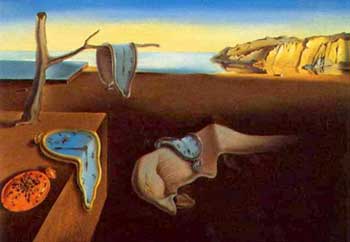| |
Surrealism

Perhaps
best known for its arresting visual art 'Surrealism' usually describes
what was a powerful intellectual movement in the inter-war years which
had its orgins in, and itself developed, a powerful and critical literary
movement. Although the artistic and political import of what comes under
the heading of surrealism varies considerably, a shared practice is the
forming of juxtapositions between unrelated objects that could be described
as a kind of attempt to write the unconscious. Hence the idea of chance
encounters such as between a sewing machine and an umbrella on a dissecting
table or the infamous lobster telephone. One of the most influential surrealists
Andre Breton developed a style of automatic writing as a surrealist practice.
Surrealism is important to study for its links to Dada (from which it
emerged) and subsequently situationism, it also exacted a strong influence
on Marxist thinkers like Henri Lefebvre, and has roots through Lettrism
with situationalist movements. Martin Jay argues the surrealist influence
was formative in reviving Hegel in France and for vitalising an anti-Cartesian
idea of the whole. However whilst favoured by Benjamin and Marcuse, both
Sartre and Adorno were vehemently against it. Contrary to an exclusively
art focused treatment of surrealism it remained a political movement which
purported to celebrate individual liberation through communal transformation
although around the figure of Breton the internal coherence of the movement
was one that was maintained by exclusion and isolation of those who no
longer served its chosen ends.
“The
definitive rupture is explained if one considers that Marxism insisted
on the submission of the irrational, while the surrealists rose to defend
irrationality to the death, Marxism tended toward the conquest of totality,
and surrealism, like all spiritual experiences, tended toward unity. Totality
can demand the submission of the irrational, if rationalism suffices to
conquer the world. But the desire for unity is more demanding. It does
not suffice that everything should be raitonal. It wants above all, the
rational and irrational to be reconciled on the same level....for Andre
Breton, totality could be only a stage, a
Albert Camus, The Rebel: An essay on Man